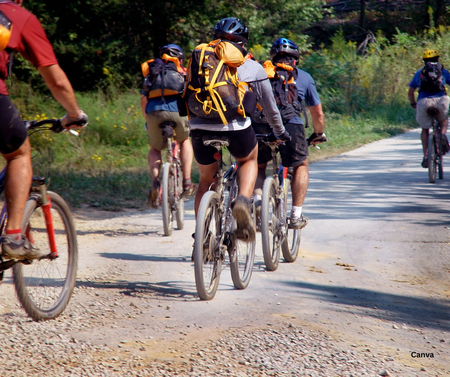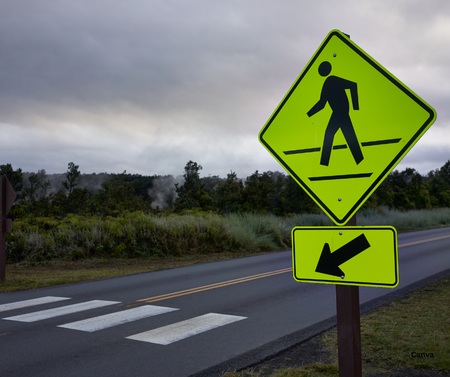
Sharing the Road in Summer: A Two-Way Street in Kane County
Summer in Kane County is a perfect time to be outdoors. Families are biking to local parks, joggers are hitting the trails, and cyclists are commuting along the county’s rural and suburban roads. With the increase in foot and bike traffic, it’s more important than ever for all road users to be alert, patient, and respectful.
For motorists, this means slowing down, giving bicyclists at least three feet of space when passing, and always watching for pedestrians—especially at crosswalks and intersections. It’s not just a courtesy—it’s the law.
But safety is a shared responsibility.
People walking and biking also have obligations. Cyclists must follow all traffic laws, including stopping at red lights and stop signs, signaling their turns, and riding predictably. Pedestrians should cross only at designated areas, make eye contact with drivers before entering the roadway, and avoid sudden or unexpected movements into traffic.
Everyone has somewhere to be, but everyone deserves to get there safely.
Kane County actively supports safe and respectful travel for all road users. The County has installed over 40 “Share the Road” State Law signs to remind drivers that bicycles are legally allowed on most roads and must be given space and consideration. These signs serve as a visible reminder that safety on our roads is everyone’s responsibility.
Kane & Northern Kendall Bike Map Update
To help residents and visitors navigate safely, the 2025 update of the Kane & Northern Kendall Bike Map are now available. These maps are distributed free of charge to libraries, municipalities, bike shops, residents, and other organizations upon request.
Visit the Bicycle & Pedestrian Resources page on the Kane County Division of Transportation (KDOT) website to view the maps and access the order form. Additional resources include the updated County Highways Map and an interactive Web App that provides current information on bike facilities, trail closures, and planned trail expansions in Kane and Northern Kendall counties.
Kane County Safety Action Plan
Kane County has also taken a proactive step to improve transportation safety through the Kane County Safety Action Plan, developed by KDOT in partnership with the Chicago Metropolitan Agency for Planning (CMAP). This data-driven strategy aims to reduce traffic-related deaths and serious injuries, with a focus on protecting pedestrians, bicyclists, and communities experiencing higher crash rates. 
With the plan now officially adopted, municipalities within Kane County are eligible to apply for Safe Streets for All (SS4A) federal implementation funding. The next funding cycle (FY 2026), expected to open in spring 2026, is currently the final round of funding available under existing federal legislation.
As Kane County's roads become busier with summer activity, the need for awareness and cooperation becomes even more important. When drivers, cyclists, and pedestrians each do their part and show respect on the road, the entire community benefits.
---------------------------------------------------------------------------------------------------------------------------------------------------------
Rules of the Road - Motorists: Sharing the Road with Bicyclists
Passing a Bicyclist
By law, you must allow at least 3 feet of space between your vehicle and a bicyclist when passing. More space is safer, especially at higher speeds.
Because most lanes are less than 14 feet wide, it's usually not legal or safe to pass a bicyclist within the same lane. Instead, merge at least partially into the next lane—and if needed, wait until it's safe to pass.
Passing in a No-Passing Zone
You may legally pass a bicyclist in a no-passing zone if:
- The bicyclist is traveling at less than half the posted speed limit.
- You can pass without exceeding the speed limit.
- There is enough clear distance ahead to pass safely.
Prevent “Dooring"
Use the Dutch Reach when exiting your vehicle:
Reach across with the hand farthest from the door. This naturally turns your body, prompting you to look behind for bicyclists or oncoming traffic.
Respect the Bike Lane
Do not drive, park, or stand in a designated bike lane—even if no bicyclists are present. Always wait for bicyclists to pass before entering the lane to park.
Check Before Turning
Yield to bicyclists. Don't underestimate their speed.
- Left turns: Watch for oncoming bicycles.
- Right turns: Don't pass a bicyclist and then cut in front.
Check your mirrors and blind spots before turning.
Stop at the Stop Line
Stopping in front of the stop line endangers pedestrians and bicyclists in the crosswalk.
Even if the stop line feels far from the intersection, stop at the line first, then move forward if needed for a better view.
Yield the Right-of-Way
Treat bicyclists as you would any other vehicle when it comes to yielding.
Respect Bicyclists
Reckless driving near a bicyclist can result in serious legal consequences.
Motorists may face misdemeanor or felony charges if a crash occurs from driving too close or aggressively.
Remember:
- Bicyclists may need to leave the bike lane.
- Be ready to slow down and move safely around them.
- Bicyclists also must be aware of vehicle direction when making turns.
For Bicyclists
- Bicycles are considered vehicles and must follow the same rules as motor vehicles:
- Stop at all stop signs and red lights.
- Yield to pedestrians in crosswalks.
- Use proper lighting at night:
- A white front headlight is required.
- A red rear reflector must be visible from behind.
- Ride as far to the right as is safe and practical.
- You may use the full travel lane if road conditions make it unsafe to ride on the right side.
- Do not ride more than two abreast (side by side).
For Pedestrians
- Drivers and bicyclists must yield to pedestrians in all crosswalks, including mid-block crosswalks without stop signs or signals.
- Only cross streets at designated locations.
- Make eye contact with drivers and bicyclists to ensure they see you.
- Avoid stepping into traffic suddenly. Always check for approaching vehicles or bicycles.

